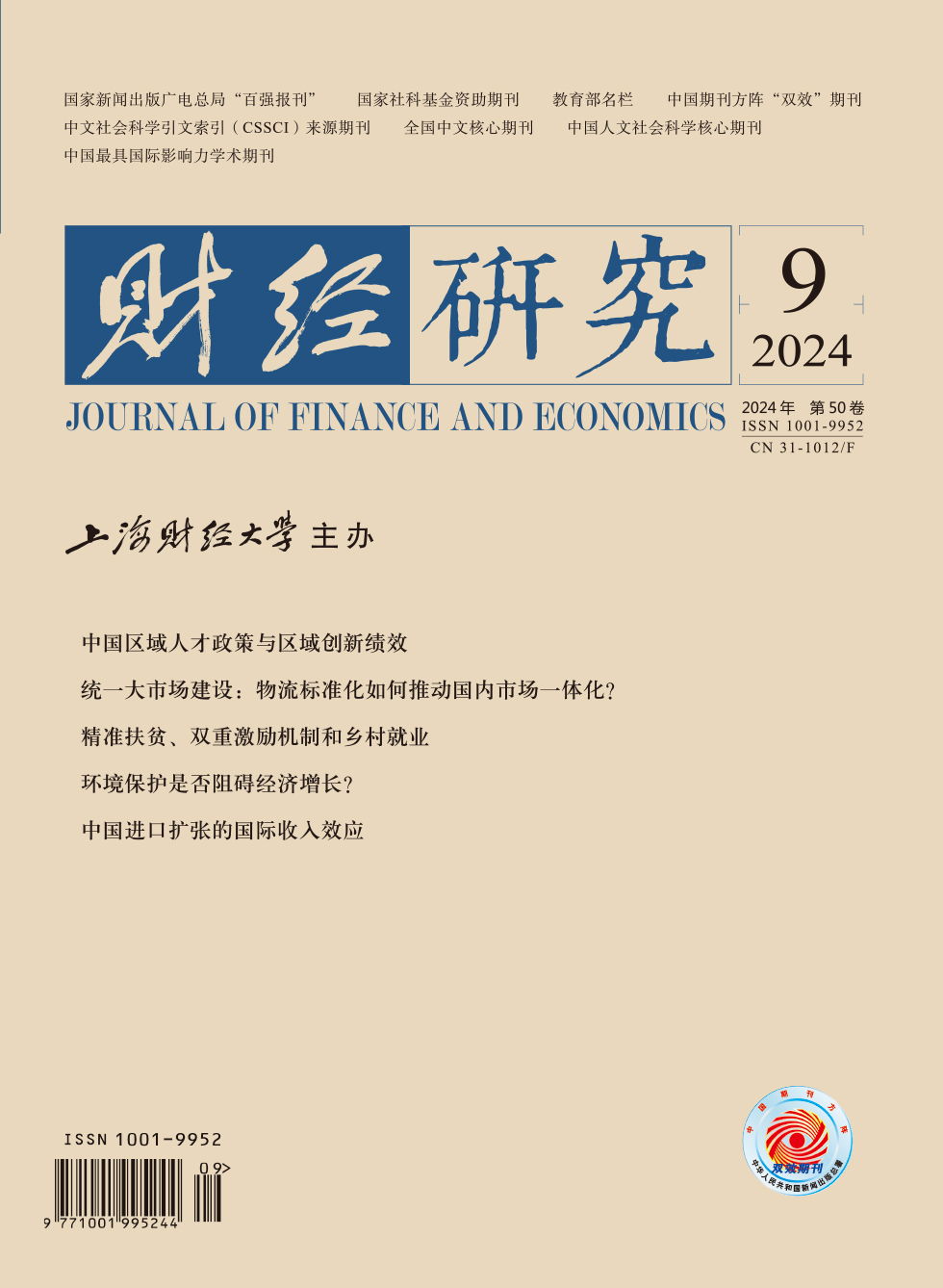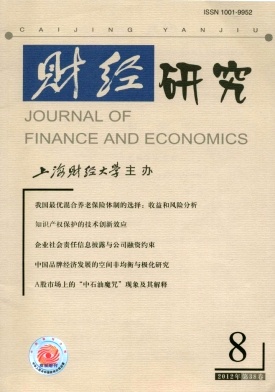显性比较优势:中国产品遭受美国反倾销的魔咒吗?
财经研究 2012 年 第 38 卷第 08 期, 页码:123 - 135
摘要
参考文献
摘要
显性比较优势是中国产品遭受美国反倾销的魔咒吗?文章基于美国对中国反倾销97起涉案产品样本,并引入非涉案395种10分位主要贸易品扩展样本,研究表明:(1)美国对中国产品反倾销当年主要集中在中国对美出口具有较强显性比较优势的涉案产品上;虽然遭受美国反倾销,但中国在35起涉案产品对美出口上仍保持着较强的显性比较优势,不过有27起涉案产品已丧失较强的显性优势。(2)扩展样本后各影响因素对美国对中国产品反倾销概率的影响程度减少,避免了样本选择的有偏性。相比来看,美国对中国产品j贸易逆差是美国ITC裁决行业损害、签发反倾销指令的最重要决定因素,是美国对中国产品反倾销的直接诱因。而显性比较优势只是影响因素之一,并不是中国产品遭受美国反倾销的魔咒。美国工业生产增长率下滑、失业率上升是其他影响因素,并且次贷危机也是重要影响因素。
[1]保罗.克鲁格曼.克鲁格曼国际贸易新理论[M].北京:中国社会科学出版社,2001:14-44.
[2]沈国兵.中美贸易平衡问题研究[M].北京:中国财政经济出版社,2007a:67-78.
[3]沈国兵.美国对中国反倾销的宏观决定因素及其影响效应[J].世界经济,2007b,(11):11-23.
[4]沈国兵.显性比较优势、产业内贸易与中美双边贸易平衡[J].管理世界,2007c,(2):5-16.
[5]谢建国.经济影响、政治分歧与制度摩擦———美国对华贸易反倾销实证研究[J].管理世界,2006,(12):8-17.
[6]Balassa B.Trade liberalisation and“revealed”comparative advantage[J].The Manches-ter School,1965,33(2):99-123.
[7]Balassa B.Comparative advantage,trade policy and economic development[M].New York:Harvester Wheatsheaf,1989:41-62.
[8]Benedictis L,Tamberi M.A note on the Balassa Index of revealed comparative advantage[R].Working Paper,2001:1-33.
[9]Blonigen B,Bown C.Antidumping and retaliation threats[J].Journal of International E-conomics,2003,60(2):249-273.
[10]Bown C,McCulloch R.U.S.trade policy and the adjustment process[J].IMF Staff Pa-pers,2005,52:107-128.
[11]Irwin D.The rise of US anti-dumping activity in historical perspective[J].The World Economy,2005,28(5):651-668.
[12]Jiang B,Ellinger A.Challenges for China—The world’s largest antidumping target[J].Business Horizons,2003,46(3):25-30.
[13]Knetter M,Prusa T.Macroeconomic factors and antidumping filings:Evidence from four countries[J].Journal of International Economics,2003,61(1):1-18.
[14]Mah J.Antidumping decisions and macroeconomic variables in the USA[J].Applied Economics,2000,32(13):1701-1709.
[15]USITC.Antidumping and countervailing duty handbook[R].Working Paper,No.3916,U.S.International Trade Commission,12th Edition,2007:1-130.
[16]White Y,Jones K.The sun sets on US antidumping orders[J].China Business Review,2000,27(3):34-43.
[17]Wooldridge J.Introductory econometrics:A modern approach[M].Ohio:Thomson/South-Western,2006:1-708.
[2]沈国兵.中美贸易平衡问题研究[M].北京:中国财政经济出版社,2007a:67-78.
[3]沈国兵.美国对中国反倾销的宏观决定因素及其影响效应[J].世界经济,2007b,(11):11-23.
[4]沈国兵.显性比较优势、产业内贸易与中美双边贸易平衡[J].管理世界,2007c,(2):5-16.
[5]谢建国.经济影响、政治分歧与制度摩擦———美国对华贸易反倾销实证研究[J].管理世界,2006,(12):8-17.
[6]Balassa B.Trade liberalisation and“revealed”comparative advantage[J].The Manches-ter School,1965,33(2):99-123.
[7]Balassa B.Comparative advantage,trade policy and economic development[M].New York:Harvester Wheatsheaf,1989:41-62.
[8]Benedictis L,Tamberi M.A note on the Balassa Index of revealed comparative advantage[R].Working Paper,2001:1-33.
[9]Blonigen B,Bown C.Antidumping and retaliation threats[J].Journal of International E-conomics,2003,60(2):249-273.
[10]Bown C,McCulloch R.U.S.trade policy and the adjustment process[J].IMF Staff Pa-pers,2005,52:107-128.
[11]Irwin D.The rise of US anti-dumping activity in historical perspective[J].The World Economy,2005,28(5):651-668.
[12]Jiang B,Ellinger A.Challenges for China—The world’s largest antidumping target[J].Business Horizons,2003,46(3):25-30.
[13]Knetter M,Prusa T.Macroeconomic factors and antidumping filings:Evidence from four countries[J].Journal of International Economics,2003,61(1):1-18.
[14]Mah J.Antidumping decisions and macroeconomic variables in the USA[J].Applied Economics,2000,32(13):1701-1709.
[15]USITC.Antidumping and countervailing duty handbook[R].Working Paper,No.3916,U.S.International Trade Commission,12th Edition,2007:1-130.
[16]White Y,Jones K.The sun sets on US antidumping orders[J].China Business Review,2000,27(3):34-43.
[17]Wooldridge J.Introductory econometrics:A modern approach[M].Ohio:Thomson/South-Western,2006:1-708.
引用本文
沈国兵. 显性比较优势:中国产品遭受美国反倾销的魔咒吗?[J]. 财经研究, 2012, 38(8): 123–135.
导出参考文献,格式为:





 5723
5723  2974
2974

